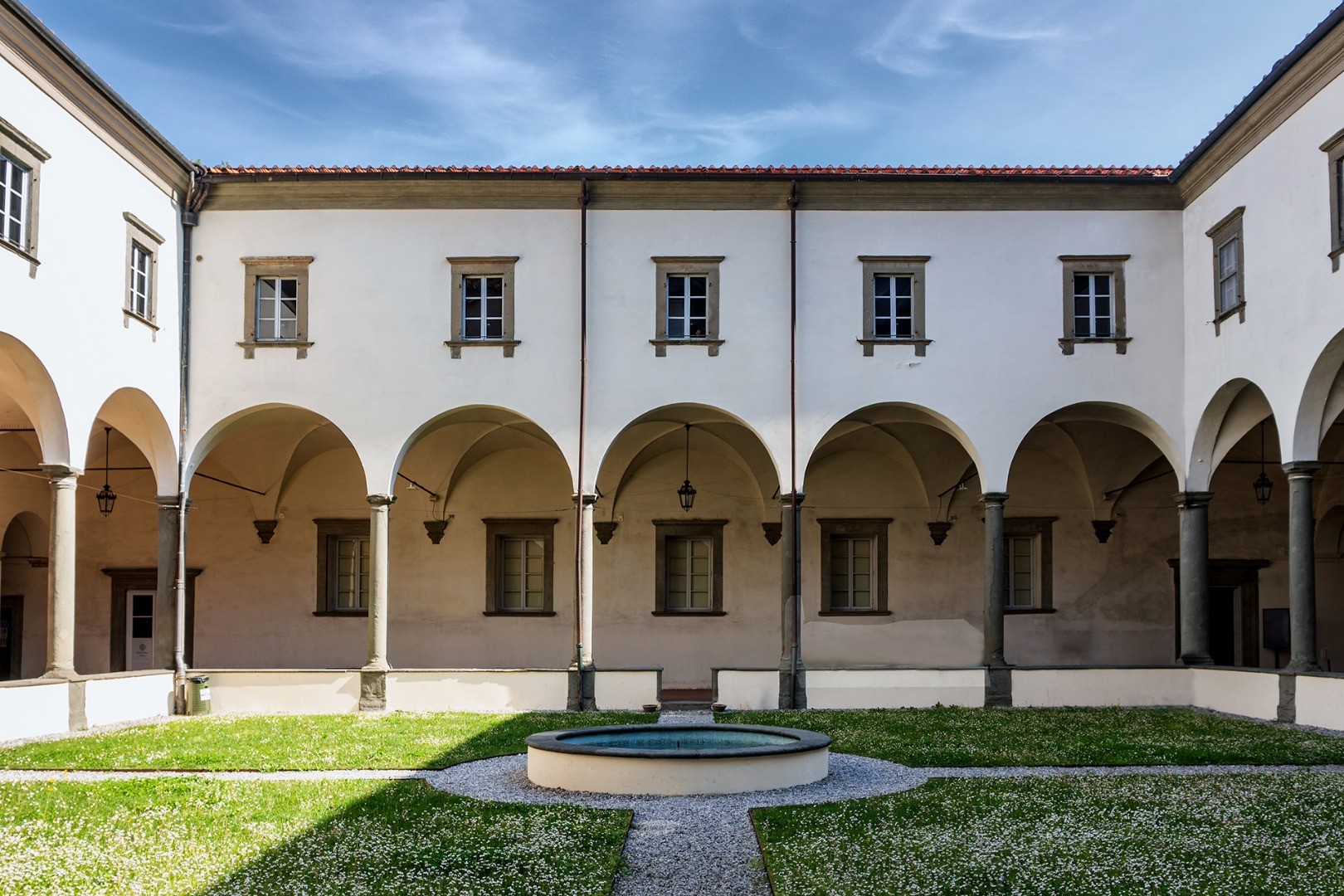Real Collegio of Lucca

The oldest construction of the building dates back to the sixth century, although from 1046 there is proof that the building housed a community of regular Canons of San Frediano, then Lateran, who stayed in the spaces adjacent to the Basilica that became the seat of their monastery.
The history of the Real Collegio is complex and closely linked to the events of the city. During the 1500s, following the unification of the Priory of the Canons of San Frediano with the Congregation of Lateran Canons, the building underwent the most significant changes: in this period the ancient building of the monastery was modified, especially after the construction of the two large cloisters that look towards the walls. Over the centuries there have been many developments, both in terms of architecture and use.
In 1779, the Republic of Lucca requested the abolition of the monastery by virtue of the institution of the University of Lucca: Pope Pius VI granted the confiscation of the ecclesiastical assets so that they were allocated to accommodate the new institute. With the fall of the Republic of Lucca and the establishment of the Principality, the Collegio Felice was founded in honor of Felice Baciocchi, a secular institution located in a building detached from the area of the seminary; a new building was also built in for the Public Library. Among the rules to attend the College there were some age limits: only young boys from seven to fourteen years old could be enrolled and it wasn’t possible to attend the institute beyond eighteen (except in the case of sovereign permission, which allowed them to stay up to twenty). The organization remained the same until the years of the Restoration: the primary and secondary school, together with the boarding school, remained on site, while the University was moved to the building where the Liceo Classico of Lucca is currently located.
From 1847, once the territory was annexed to the Grand Duchy of Tuscany, the institute took the name of Collegio Ferdinando and continued to be very popular even under the Kingdom of Italy; after that there was a period of decline as for similar Italian institutes until 1938, when the boarding school was closed. In the 1980s it was no longer an educational institution and underwent an important restoration. On the occasion of the Jubilee of 2000, the Real Collegio obtained ministerial funds for further restoration.
Today it is an active and important venue for the city of Lucca, ideal for exhibitions and conferences.
The history of the Real Collegio is complex and closely linked to the events of the city. During the 1500s, following the unification of the Priory of the Canons of San Frediano with the Congregation of Lateran Canons, the building underwent the most significant changes: in this period the ancient building of the monastery was modified, especially after the construction of the two large cloisters that look towards the walls. Over the centuries there have been many developments, both in terms of architecture and use.
In 1779, the Republic of Lucca requested the abolition of the monastery by virtue of the institution of the University of Lucca: Pope Pius VI granted the confiscation of the ecclesiastical assets so that they were allocated to accommodate the new institute. With the fall of the Republic of Lucca and the establishment of the Principality, the Collegio Felice was founded in honor of Felice Baciocchi, a secular institution located in a building detached from the area of the seminary; a new building was also built in for the Public Library. Among the rules to attend the College there were some age limits: only young boys from seven to fourteen years old could be enrolled and it wasn’t possible to attend the institute beyond eighteen (except in the case of sovereign permission, which allowed them to stay up to twenty). The organization remained the same until the years of the Restoration: the primary and secondary school, together with the boarding school, remained on site, while the University was moved to the building where the Liceo Classico of Lucca is currently located.
From 1847, once the territory was annexed to the Grand Duchy of Tuscany, the institute took the name of Collegio Ferdinando and continued to be very popular even under the Kingdom of Italy; after that there was a period of decline as for similar Italian institutes until 1938, when the boarding school was closed. In the 1980s it was no longer an educational institution and underwent an important restoration. On the occasion of the Jubilee of 2000, the Real Collegio obtained ministerial funds for further restoration.
Today it is an active and important venue for the city of Lucca, ideal for exhibitions and conferences.
Piazza del Collegio, 13, Lucca
Scopri altre attrazioni vicino a Real Collegio of Lucca
See allYou may also like..
See allFind more
0











